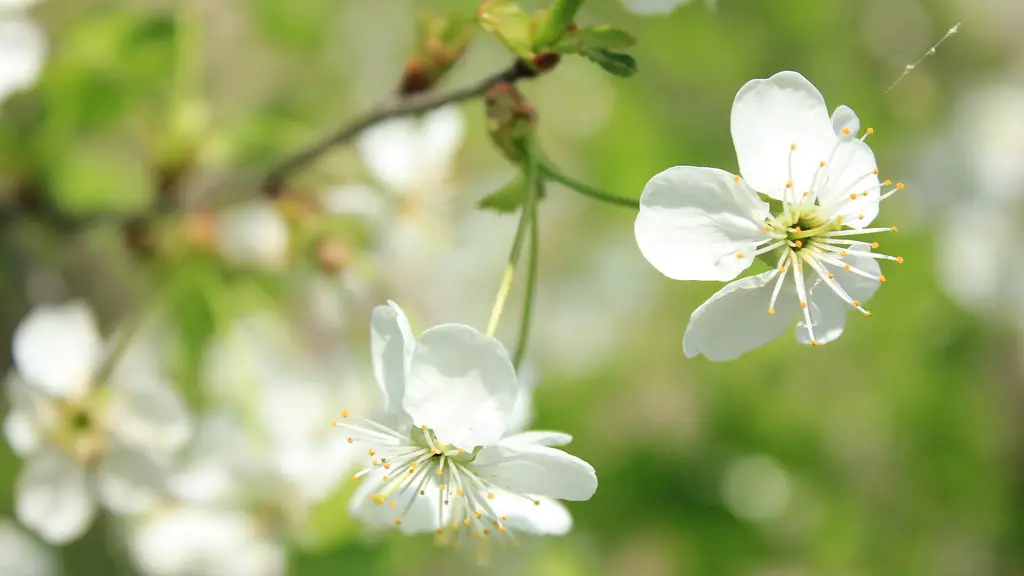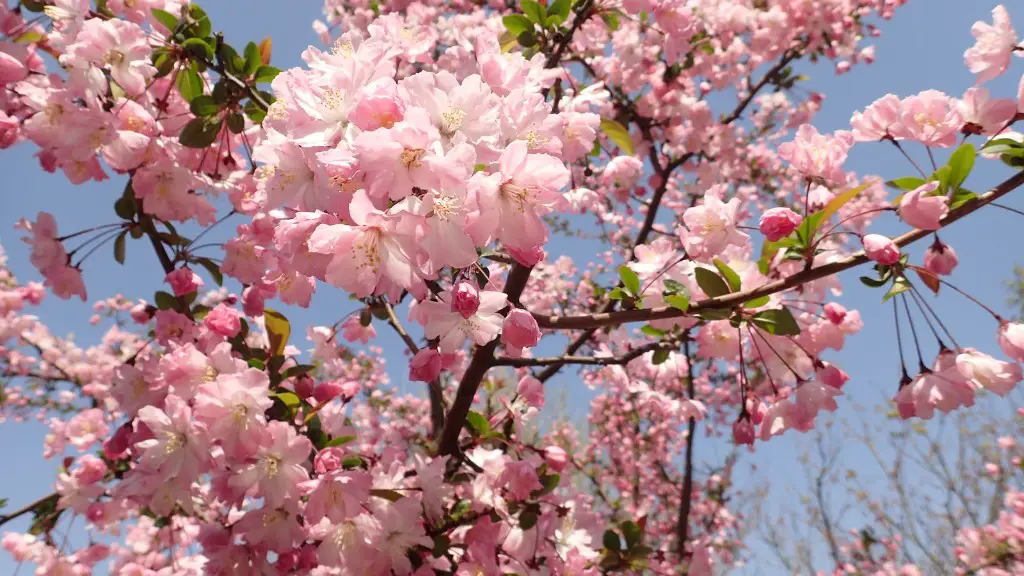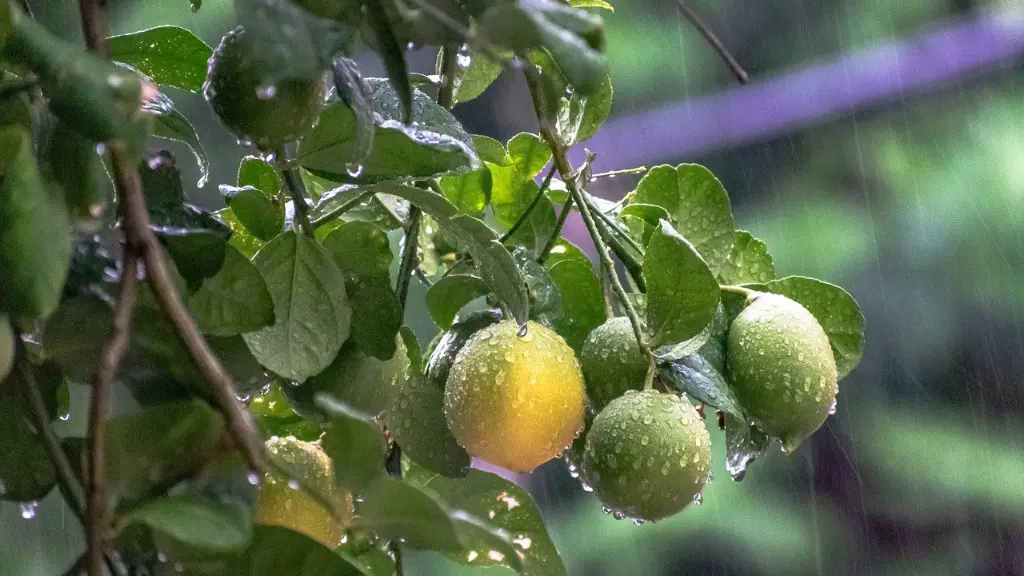When an apple tree fails to blossom and produce fruit, it is often a concern of great frustration and confusion for the orchard owner, as it can mean a significant loss in potential income. But why might an apple tree suddenly stop blooming and producing fruit?
The most common reason why an apple tree won’t blossom is inadequate sunlight. For an apple tree to photosynthesize efficiently, it needs to receive a minimum of six hours of direct sunlight a day. If the tree isn’t receiving enough sunlight, the leaves and blossoms will not be able to properly mature, so blossom production is inhibited.
Another issue could be nutrient deficiencies or an inappropriate soil pH. If the soil lacks essential nutrients or hinges too far to one side of the pH scale, the tree will become weak and won’t have enough energy to generate blossoms. A soil test is the best way to figure out what could be the cause of the deficiency to ensure the right balance of essential soil nutrients.
Lastly, improper pruning could be the cause of your apple tree not flowering. Apple trees require vegetation to be regularly and properly trimmed to promote the growth of healthy and productive foliage. If the pruning was done too aggressively then it could prevent the tree from blooming. Trees should be pruned just after flowering season to ensure the highest production capacity of the following season.
Sunlight
The key factor for an apple tree’s photosynthesis and subsequent birth of blossoms is having enough sunlight. Many apple trees cannot thrive without anywhere between 6 and 8 hours of direct sunlight, depending on their variety. If the tree is receiving inadequate sunlight, the blossoms will not be able to mature and flower properly.
Positioning the tree in full sun can provide the adequate amount of sunlight it needs to grow and blossom. The best way to find a good position for the tree is to watch the sunlight throughout the day, and note where it receives the most direct sun.
Appropriate pruning can also help ensure the tree receives enough sunlight. Pruning will determine the amount of foliage, and where it is on the tree. The ideal location for foliage is at the top, so none of the lower branches are shaded by the canopy of leaves.
To check if the tree is receiving enough sunlight, it can be monitored for its position in any given month. Trees which are far away from walls and buildings can easily receive up to 8 hours of direct sunlight a day. The best time to position the tree is after its flowering season so it’s ready to receive ample sunlight come its next flowering season.
Nutrients
Adequate nutrition affects the overall health and vigour of a tree—especially when it comes to budding and blossom production. Many apple tree owners will apply fertilizers in the late summer, leading up to the fall. However, if the tree is deficient in essential minerals and nutrients, regardless of how much fertilizer is applied, it won’t be able to generate blossoms.
The most accurate way to identify a nutrient deficiency is to conduct a soil test. This will determine the acidity of the soil, as well as its plentifulness in minerals and nutrients. Once the apple tree owner knows exactly what’s in their soil, they can purchase the right fertilizer to enrich it; this way, the tree will be more likely to output more blossoms come it’s next flowering season.
Aside from applying fertilizer, mulching is a great way to reinforce soil nitrogen levels. Adding a couple inches of mulch to the base of the tree will help make the soil richer and with a better texture. This could help the tree sapling access more nutrients from its environment.
A great way to keep the tree’s soil fertile and healthy is by layering something called compost tea. This is a brew of diluted compost which helps the tree balance its pH levels, mineral intake and micro-nutrient availability. When poured into the soil, it’s a great way to establish a strong depth of nourishment for the tree.
Pruning
The act of pruning determines the shape of the tree and maintains a happy balance between its foliage and blooming. If the tree is pruned at the wrong time or too aggressively, it could inhibit blossom development. That is why it’s essential to prune the tree correctly and in the right season.
Pruning should take place after flowering has ended. This is because an apple tree should be in dormancy by this period, or it’ll be adjusting itself to its swiftly changing environment. Pruning at this time will guarantee the tree’s best shape for the season.
It’s best to trim the old and dead branches, as well as any low lying crossed branches which could be preventing adequate sunlight from reaching the fruit buds. This will encourage new growth, allowing the tree the chance to maximise it’s blossom production and orchard health.
The best pruning equipment to use must be sharp and disinfected with rubbing alcohol. This ensures the tree is free from any lethal diseases which could subsist on the blade if it isn’t clean. A common microbial disease which develops in apple trees, caused by ineffective pruning, is fire blight.
Once the pruning is finished, it’s best practice to apply a layer of compost around the tree. This will further soothe and protect the tree from any diseases and keep it in the best condition, come its bloom and fruiting season.
Diseases
There are a variety of diseases which can cause blossom production failure in apple trees. When planning an orchard it’s ideal to buy trees which are bred to be resilient against majority of the common illnesses, such as fire blight and cedar apple rust. These diseases can limit the amount of blossoms an apple tree produces, and can even cause the complete failure of buds.
The best way to prevent any potential invasion of disease is to keep an eye on the tree. If any leaves, limbs or blossoms look wilty and sickly, they should be removed and discarded. If done correctly, the tree could heal itself from the problem and the outbreak could be pulverized.
Checking the tree ground for any mould growth or untoward signs of infection is another way to avoid unpleasantness. A regular checkup of the tree’s surroundings and soil is imperative, to ensure it’s in the best condition leading up to blossom season.
A well poured compost tea is also a great way to protect trees from disease. When first planted and watered, it’s best to start a cycle of soil fermentation. This will produce a strong blend of minerals and nutrient solutions to encourage the tree’s optimal development.
By protecting the tree from disease, the blossoms will be more likely to bloom-up and produce fruit. It’s best to take preventive measures when establishing an orchard, as this ensures to eliminate unwanted events of disease.
Variety
The last element to consider as a potential factor of blossom production failure is the variety of the tree. Each apple tree comes with different values and specialties. Some varieties will require more sunlight than others, or can handle different climates and soil conditions.
It’s ideal to research the tree’s variety to see what can suit the area it’s going to be planted in. Some trees will not be able to fully flourish and produce adequate blooms in some soil and climate conditions so it’s ideal to research the details.
Some apple growers choose to buy clones of the same trees so they’re sure the tree will produce with no problems. This is because clones imitate the same qualities of the exact same tree from which they are taken, so the results will be a known quantity.
If you’re unsure of what to plant, always speak with a local nursery, as they can inform you of the types of trees which can best suit the local conditions.
Apple tree blooms will not thrive if it’s exposed to stressful situations. Different factors like sunlight, nutrients, pruning, disease and variety can all affect the blossom production of an apple tree. If any of these elements are not handled properly, it’s likely the tree will be unable to produce the necessary blossoms.




